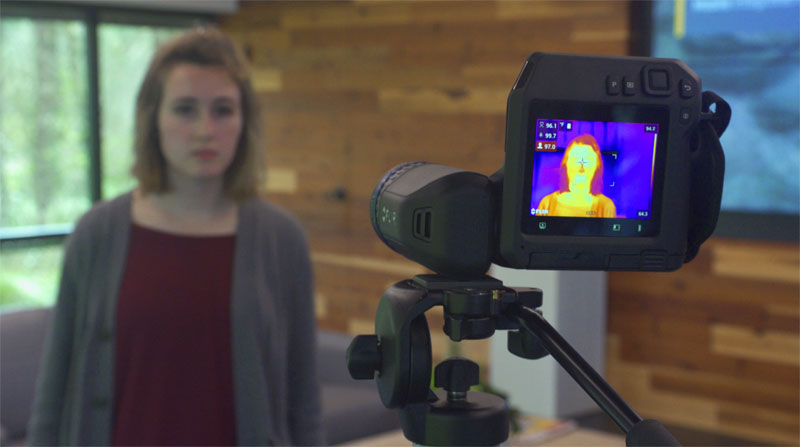
Demand for FLIR Temperature Screening Devices Rises Along with Number of Coronavirus Cases
WILSONVILLE, Ore., March 13, 2020 — In efforts to contain the highly contagious virus causing COVID-19, thermal cameras, set up at checkpoints or hand-held by personnel at airports, borders, and entrances to businesses, schools, and other institutions, are being used to screen large numbers of people for elevated body temperatures quickly and reliably. FLIR thermal imaging products for temperature screening, which include hand-held and permanently mounted systems, are among the systems being used. The same FLIR sensor, calibration, and measurement capabilities are available in both formats; the choice of hand-held or fixed is based on how the customer prefers to apply the technology.
Given the current situation, FLIR is experiencing increased demand for its hand-held T-series products as well as its A310 fixed-mounted thermal imaging camera. Also in high demand is a third category of product, the IR200 noncontact thermometer, which is pointed at the person’s forehead to scan for signs of fever.

A FLIR Systems T540 thermal camera being used to screen for temperature. Courtesy of FLIR Systems.
As the list of countries using FLIR products for temperature screening continues to grow — the list now includes China, Thailand, Taiwan, the Philippines, Singapore, Malaysia, South Korea, Italy, and the U.S. — the company says its supply chain is continuing to keep up with demand. “We’ve been selling these cameras for checking for elevated body temperature for many years, going back to 2003 with the SARS epidemic and more recently with the Ebola outbreak,” Paul Czerepuszko, strategic business development director, said. The company’s chief financial officer, Carol Lowe, said that FLIR Systems would continue to monitor the situation, including its impact to the supply chain. Lowe said that the company did not expect a significant impact to its business from a long-term supply availability issue or lower customer demand stemming from any macroeconomic impact.
FLIR has received FDA 510(k) approval for its thermal imaging and temperature screening products. The FLIR devices are intended as adjunct screening devices to clinical procedures in the diagnosis, quantifying, and screening of differences in skin surface temperature changes. The FLIR systems can visualize and document temperature patterns and changes; they are not, Czerepuszko said, medical devices, and they cannot detect the coronavirus or other infections. “This is an initial screening step; then the medical professionals take over,” he said.
“For years, going back to the SARS outbreak and others, FLIR technology has been incorporated into ports and borders and airports and other places to look for elevated body temperatures,” Jim Cannon, FLIR CEO, said. “We have seen a significant increase in those orders in the past month. Right now, we’re working really hard to ensure that we have the supply chain to meet all of that demand.”
/Buyers_Guide/Teledyne_FLIR_Systems_Inc/c5031